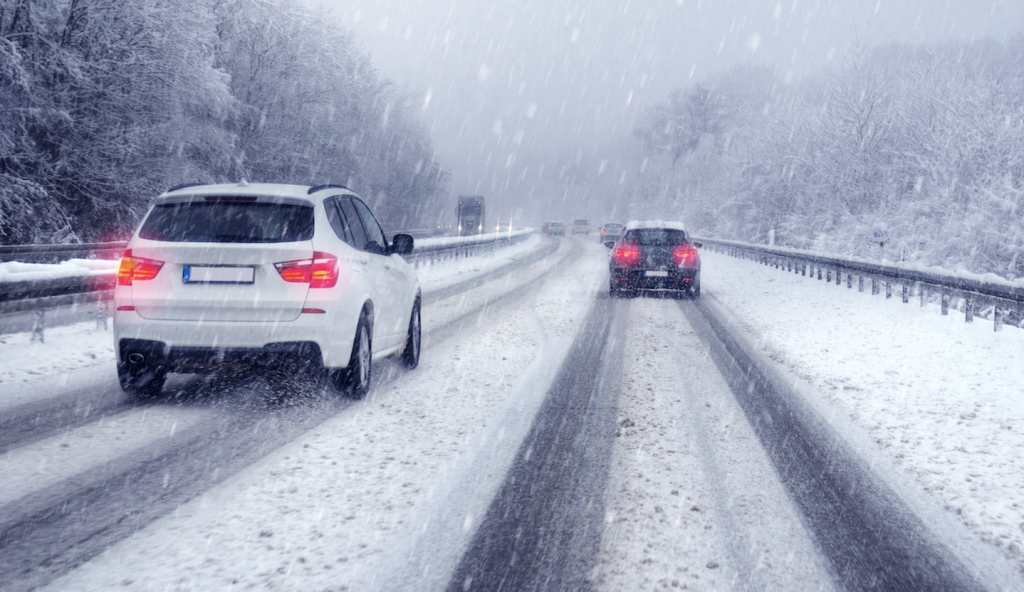Nov 10, 2023

Hitting the road this holiday season? It might be a good idea to brush up on some winter driving tips! When the snow and temperatures start falling, driving conditions can get questionable. Find peace of mind with the help from these helpful winter driving tips and tricks!
Think it might be time to upgrade your ride altogether? Hurry into Younger Mitsubishi and our team can help you find the right Mitsubishi for you all of your family’s needs! Browse our available inventory now and schedule a test drive for whenever works best for you!
Driving Tips:
- Avoid driving while you’re fatigued.
- Never warm up a vehicle in an enclosed area, such as a garage.
- Make certain your tires are properly inflated.
- Keep your gas tank at least half full to avoid gas line freeze-up.
- If possible, avoid using your parking brake in cold, rainy and snowy weather.
- Do not use cruise control when driving on any slippery surface (wet, ice, sand).
- Always look and steer where you want to go.
- Use your seat belt every time you get into your vehicle.

Long-Distance Driving Tips:
- Watch Weather Reports
- Service your vehicle before hitting the road
- Keep at least half a tank at all times
- If you become snow-bound, stay with your vehicle. It provides temporary shelter and makes it easier for rescuers to locate you.
- Tie a brightly colored cloth to the antenna or place a cloth at the top of a rolled up window to signal distress, if needed.
- Make sure the exhaust pipe isn’t clogged with snow, ice or mud if you slide off the road
Tips For Driving In The Snow:
- Accelerate and decelerate slowly. Applying the gas slowly to accelerate is the best method for gaining traction and avoiding skids.
- Drive slowly. Everything takes longer on snow-covered roads. Accelerating, stopping, turning – nothing happens as quickly as on dry pavement. Give yourself time to maneuver by driving slowly.
- The normal dry pavement following distance of three to four seconds should be increased to eight to ten seconds
- Know your brakes. Whether you have antilock brakes or not, the best way to stop is threshold braking.
- Don’t stop if you can avoid it.
- Don’t stop going up a hill. There’s nothing worse than trying to get moving up a hill on an icy road.
- Make it known what kind of driving assistance you have (AAA, Roadside Assistance, etc.)


![[del.icio.us]](https://www.youngermitsubishi.com/blogs/66/wp-content/plugins/bookmarkify/delicious.png)
![[Facebook]](https://www.youngermitsubishi.com/blogs/66/wp-content/plugins/bookmarkify/facebook.png)
![[Google]](https://www.youngermitsubishi.com/blogs/66/wp-content/plugins/bookmarkify/google.png)
![[LinkedIn]](https://www.youngermitsubishi.com/blogs/66/wp-content/plugins/bookmarkify/linkedin.png)
![[StumbleUpon]](https://www.youngermitsubishi.com/blogs/66/wp-content/plugins/bookmarkify/stumbleupon.png)
![[Technorati]](https://www.youngermitsubishi.com/blogs/66/wp-content/plugins/bookmarkify/technorati.png)
![[Twitter]](https://www.youngermitsubishi.com/blogs/66/wp-content/plugins/bookmarkify/twitter.png)
![[Windows Live]](https://www.youngermitsubishi.com/blogs/66/wp-content/plugins/bookmarkify/windowslive.png)


